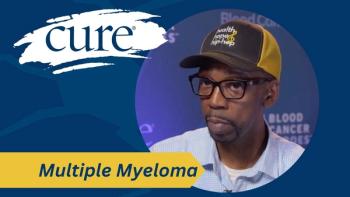
Uneven Access to Preventive Medicine Could Explain Rising Racial Inequity in Liver Cancer Death Rate
After lifesaving medicine became available to treat hepatitis C virus, a risk factor for liver cancer, racial inequities in the death rate from the malignancy began a steady upward climb.
Racial inequities in the liver cancer death rate, which previously had been declining, started rising after lifesaving drugs became available to treat hepatitis C virus, a major risk factor for the cancer.
The reasons for the rise among Black patients compared with white ones could include “unintended social side effects such as unequal accessibility, acceptability and/or utilization,” according to researchers from Florida Atlantic University's Schmidt College of Medicine and Baylor College of Medicine in Houston, who reported the findings in a recent study published in EClinical Medicine.
Researchers pointed out that after the introduction of other lifesaving drugs — active retroviral drug therapy for human immunodeficiency virus and surfactant for respiratory distress syndrome of the newborn — racial inequalities in the death rates for those conditions also rose.
“It is clear that an important priority should be to decrease racial inequalities in mortality following the introduction of lifesaving drugs,” the authors wrote.
Reducing those inequalities is crucial when it comes to liver cancer, also known as hepatocellular carcinoma, because the U.S. death rate from the disease has been increasing at the highest rate of all malignancies in both men and women, making it the second most common cause of cancer death in America, the researchers reported. In addition, they stated, the disease has a higher incidence and death rate in older Blacks compared with whites.
The researchers culled information from the U.S. Centers for Disease Control and Prevention Wide-ranging ONline Data for Epidemiologic Research (WONDER) to calculate liver cancer death rates from 1979 to 2016 in those 55 years of age and older, who are the most likely to be affected by the disease. They used statistical software from the National Cancer Institute to analyze trends. First, they figured out the death rate that would have affected Black patients if they had died from liver cancer at the same rate as whites who were the same ages and genders. Then, they compared that finding to the actual death rate for Black patients to determine the excess mortality experienced by that population.
The analysis showed that racial inequalities in the U.S. liver cancer death rate for people 55 and older declined from 1979 to 1998 but steadily increased from 1998 to 2016. Of 16,770 deaths from liver cancer among Blacks that occurred in 1998 to 2016, the excess relative to white patients increased from 27.8% to 45.4%; the trend was more prominent in men. Yet, at the same time, racial mortality inequalities decreased overall for liver cancer’s major risk factors, including alcohol use, obesity and diabetes, the researchers reported.
There were 473 deaths from liver cancer among Black study participants in 1998, but researchers found that there would have been 131 fewer, a 28% decrease, if the patients had rates in line with those of whites who were the same age and sex. In 2016, this excess reached 45.4%, with 1,657 deaths that would have been reduced by 751 if Black patients had mortality rates that matched their white counterparts. In all, from 1998 to 2016, there were 7,195 excess deaths from liver cancer among Blacks (5,684 among men and 1,411 among women), the researchers wrote.
Looking at each population separately, there was a greater apparent increase in deaths among Blacks compared with whites. The mortality rate for Blacks increased from 9.4 per 100,000 in 1998 to 16.7 per 100,000 in 2016, an increase of 77.7%, while the corresponding values for whites were 7.2 and 10.3, an increase of 43.1%, the researchers reported.
For Black patients age 55 and older, the death rate increased by 1.7% per year from 1979 to 1997 and by 4.2% per year from 2000 to 2016, according to the researchers. In contrast, they wrote, corresponding rates for white patients increased by 3.5% per year from 1979 to 1990 and by 2.0% per year from 1990 to 2016.
More Research Needed
“It is tempting to speculate that these findings may be related, at least in part, to mistrust of the health care system, decreases in adherence and responses to drugs or even, in theory, biological differences,” they wrote. “It is certainly plausible that decreases in adherence in Blacks leads to lower efficacy.”
As a reason for mistrust of the health care system among Black patients, the researchers cited the 1932-1972 study of untreated syphilis in Black men, conducted by the U.S. Public Health Service and the Tuskegee Institute. Participating men were not given the opportunity to provide informed consent or given adequate treatment to cure their illness, even when penicillin became the standard of care in 1947, according to the Centers for Disease Control and Prevention.
“Finally, differential access to care and other social benefits may play a role,” the researchers stated, noting that treatments for hepatitis C can be “prohibitively expensive.”
The researchers stated that their findings are “useful to formulate but not test hypotheses” and suggested that more research should be conducted in the form of analytic epidemiological studies.




